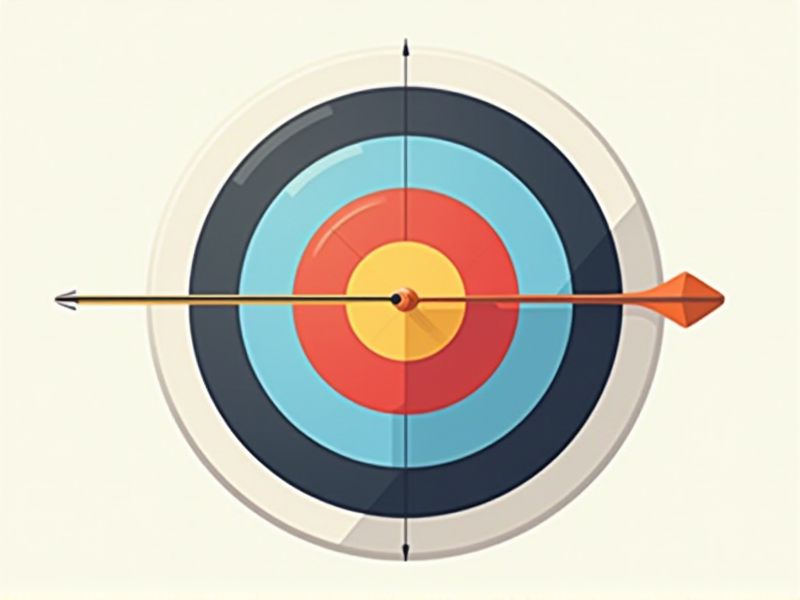
When setting up an archery range, it's essential to follow standard dimensions to ensure safety and consistency. For target archery, the recommended shooting distance is typically 18 meters (about 20 yards) for indoor ranges and up to 70 meters (about 77 yards) for Olympic outdoor events. The minimum width for a single shooting lane is around 1.25 meters (about 4 feet), allowing each archer enough space to draw and shoot safely. Additionally, consider including safety zones--such as a 20-meter clear area behind the targets and at least 5 meters on each side--to protect both archers and bystanders.
Target Face Size
The standard target face size for archery competitions is typically 80 centimeters in diameter for outdoor events and 40 centimeters for indoor events. These sizes are designed to accommodate varying distances; for example, archers shoot from 70 meters in outdoor tournaments and from 18 meters indoors. Targets are often marked with concentric scoring rings, with the innermost ring worth 10 points, encouraging precision and accuracy. Understanding these standards is crucial for both competitive archers and event organizers to ensure fair assessments and adherence to official regulations.
Shooting Line Distance
The standard shooting line distance in archery ranges typically starts at 18 meters for indoor competitions, while outdoor ranges can extend to distances of 30, 50, 70, or even 90 meters, depending on the discipline. The International Archery Federation (World Archery) mandates these distances for various target types, ensuring uniformity across competitions. Accurate measurement and clear marking of the shooting line are crucial to maintaining safety and fair play in archery. For recreational archers, establishing a comfortable shooting distance tailored to skill levels can enhance practice sessions and overall performance.
Safety Zone Area
The safety zone at an archery range is essential for preventing accidents and ensuring a secure environment for all participants. This designated area typically extends a minimum of 50 yards in front of the shooting line, creating a protective buffer where no unauthorized individuals should enter. Archers must ensure their bows and arrows are properly handled, and that all safety protocols are adhered to while within this precinct. Your awareness of these safety boundaries is crucial for promoting a responsible and enjoyable experience for everyone involved in the sport.
Target Butt Height
The standard target butt height for archery ranges varies internationally, generally set between 1.2 meters (4 feet) and 1.5 meters (5 feet) from the ground. This height ensures optimal visibility and accessibility for archers of various skill levels, making consistent shooting practice more effective. You should consider that adhering to these standards not only enhances safety but also improves the overall shooting experience. Many tournaments enforce these height regulations to maintain fairness and uniformity across competitions.
Shooting Lane Width
The standard shooting lane width for an archery range typically measures 1.2 meters (4 feet), ensuring that archers have ample space to safely shoot their arrows without the risk of interference from other lanes. This width helps prevent accidents and promotes better focus on target acquisition, allowing for a more enjoyable shooting experience. Many ranges also incorporate additional spacing between lanes, often exceeding 3 meters (10 feet), to enhance safety and minimize distractions. Proper lane dimensions are crucial for both recreational and competitive archery, contributing to the overall integrity of the sport.
Waiting Line Distance
The standard waiting line distance for an archery range is typically set at 7 meters (approximately 23 feet) from the shooting line. This distance ensures safety by providing space for archers to prepare and execute their shots without interfering with others. Maintaining this distance minimizes the risk of accidents and creates an organized environment for archery practitioners. You should always follow local regulations and guidelines to ensure a safe and enjoyable experience at the range.
Equipment Line Spacing
The standard for archery range equipment line spacing mandates a minimum distance of 18 meters to ensure safety and optimal performance. This spacing allows archers to draw their bows without interference while accommodating various bow types and shooting styles. For competitive events, such as tournaments, adjustments may be necessary; for instance, distances can vary from 30 meters for youth competition to over 70 meters for elite levels. You should always verify that your range complies with local regulations to maintain a safe shooting environment.
Field Layout Alignment
The alignment of a field layout in an archery range is crucial for ensuring safety and accurate shot placement. Ideally, targets should be positioned in clear sight without obstructions, with a minimum distance of 30 meters between shooting lines and the nearest target for safety. Each target zone must also accommodate various shooting angles, typically ranging from 20 to 80 degrees, allowing for a comprehensive skill assessment. Proper signage and distance markers, often placed every 10 meters, enhance navigation through the range and improve the overall practice experience.
Backstop Usage
The backstop in an archery range plays a crucial role in safety and efficiency, typically constructed of dense materials like sandbags or layered bales of straw, effectively stopping stray arrows. A properly designed backstop should extend beyond the target area, often measuring at least 10 feet high and 20 feet wide, to accommodate all skill levels. Regular inspections are essential; it is recommended to check for damage or wear every month to maintain optimal performance. Your awareness of these standards can enhance both your safety and enjoyment while practicing archery.
Range Length
An archery range typically adheres to specific standards regarding range length, which can vary based on the type of archery being practiced. For instance, indoor ranges usually measure between 18 to 25 meters, catering to target archery formats. Outdoor ranges, designed for more extensive shooting, often span distances from 30 up to 90 meters, complying with competitive guidelines. Understanding these standards is crucial for ensuring optimal safety and performance during your archery sessions.
